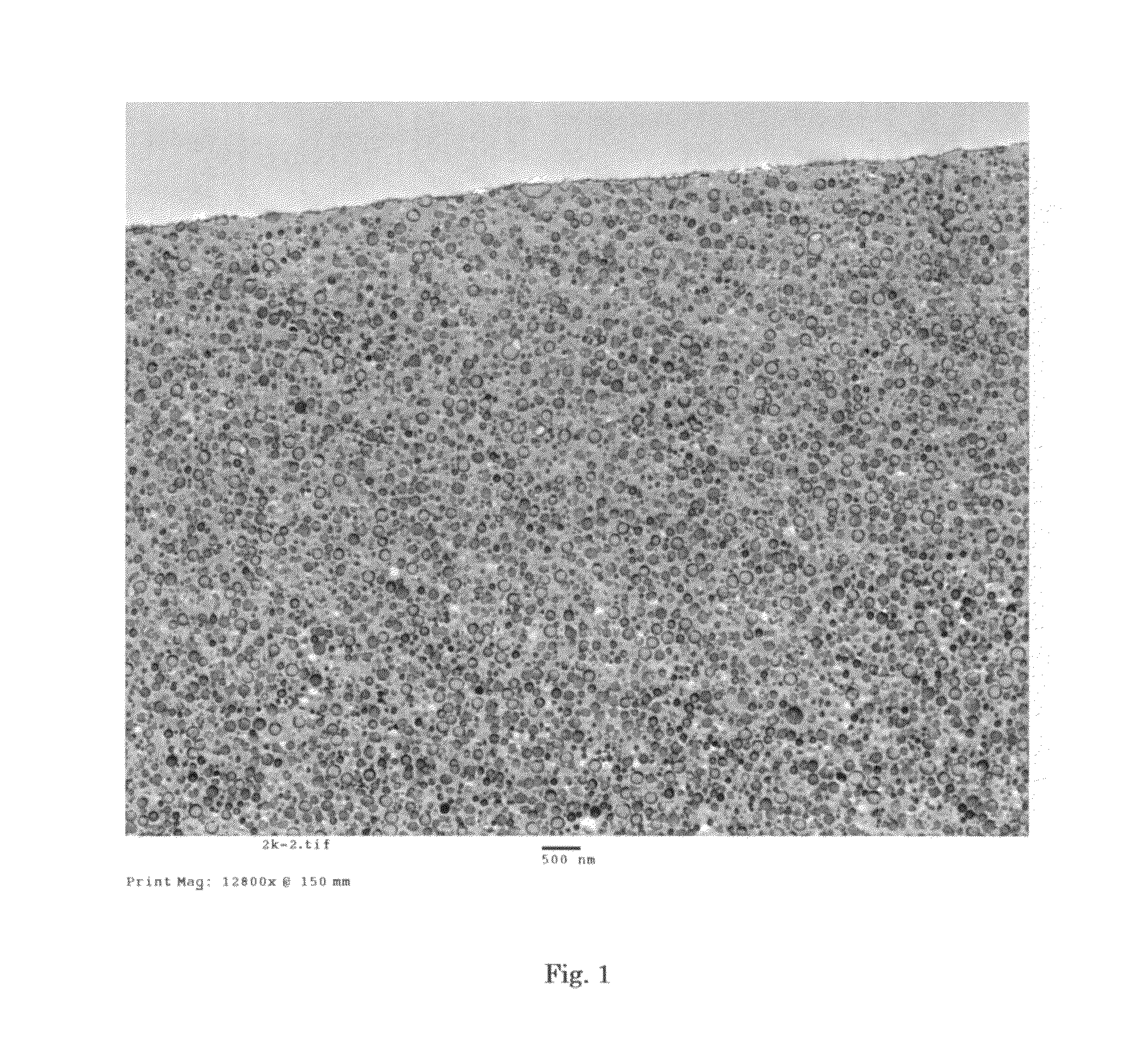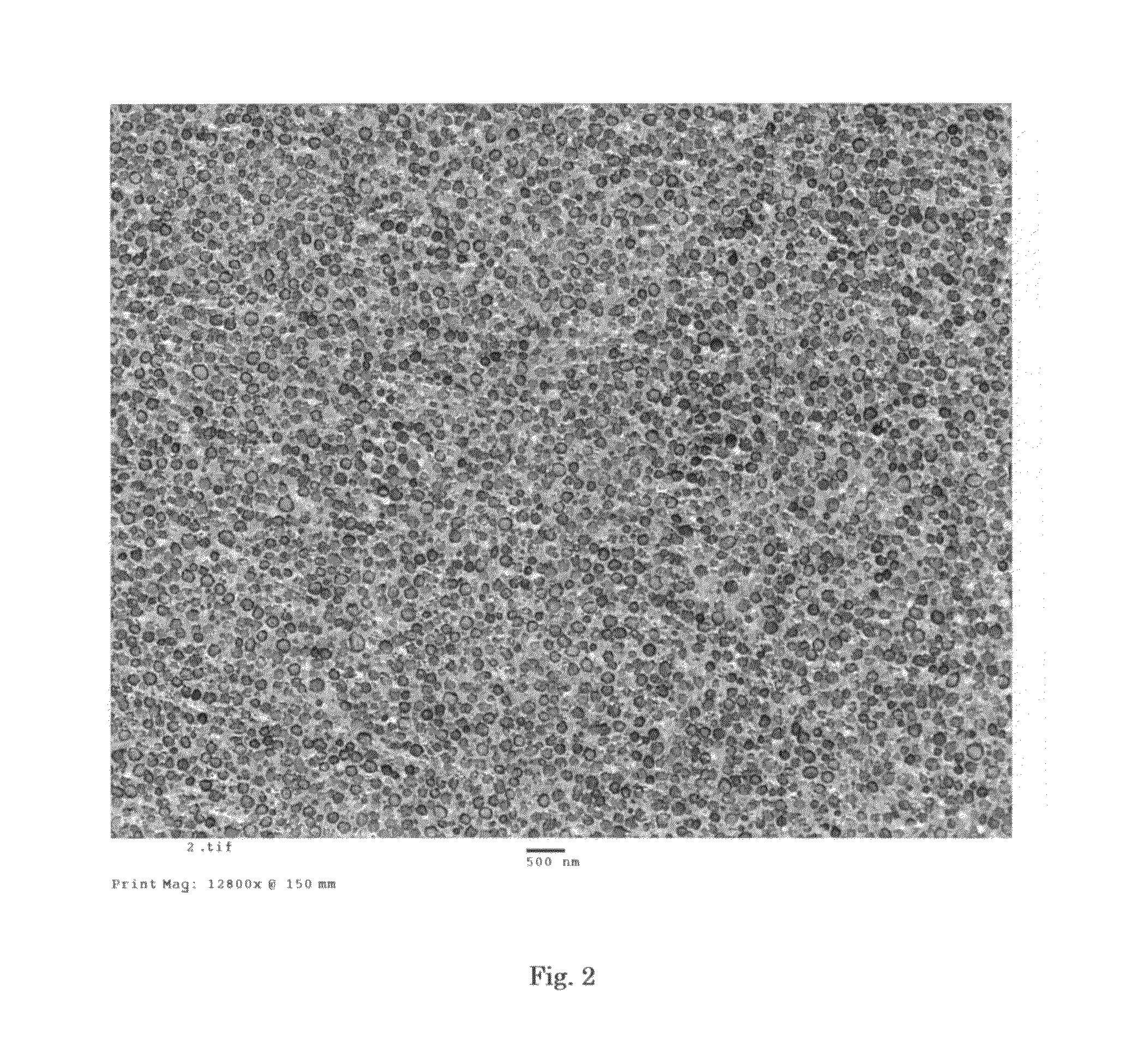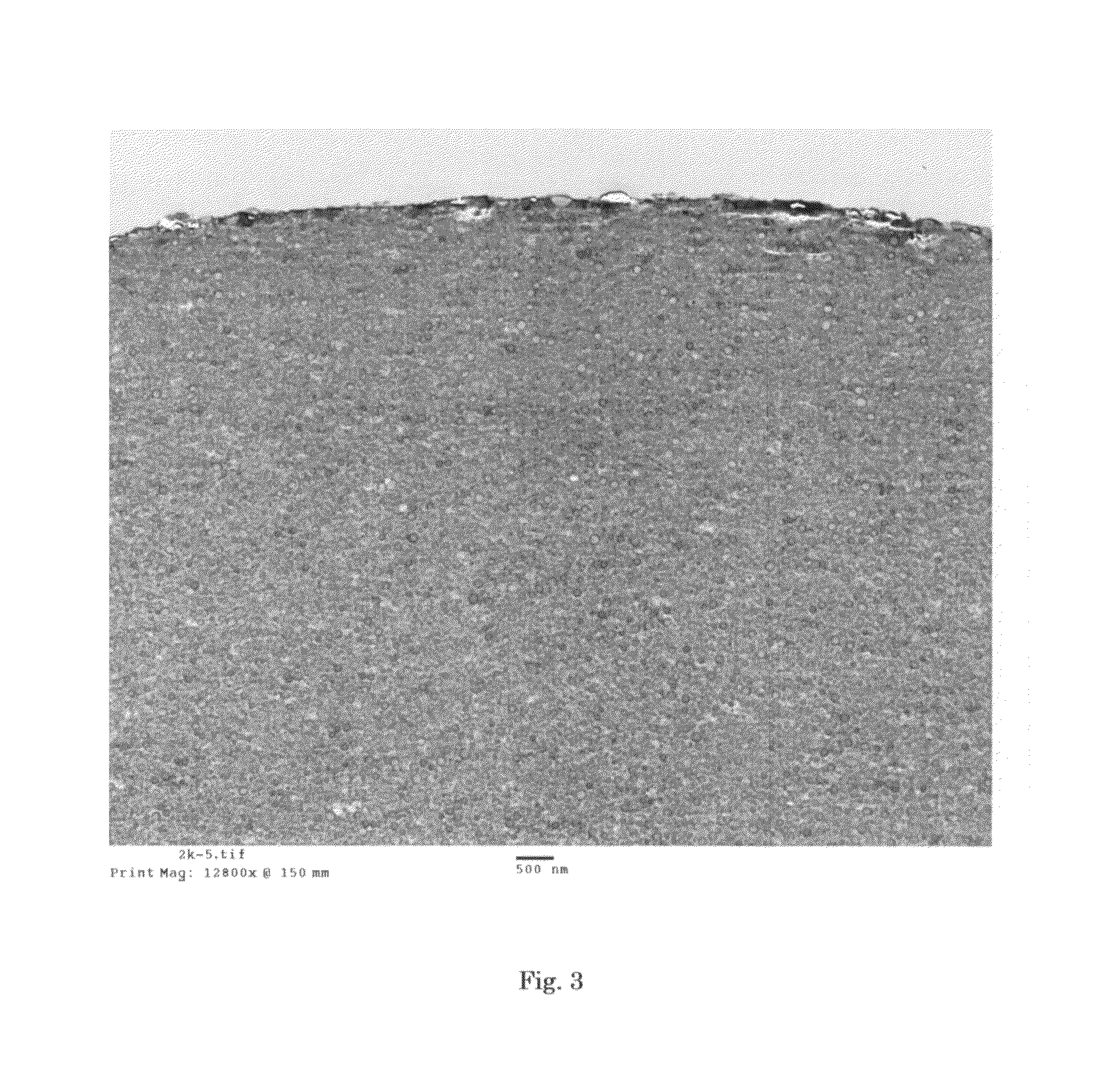Styrene-modified polyethylene-based resin beads, styrene-modified polyethylene-based expandable resin beads, production method therefor, pre-expanded beads and expanded molded article
a technology of polyethylene-based resin and polyethylene-based resin, which is applied in the direction of manufacturing tools, foundry cores, and manufacturing tools, can solve the problems of insufficient chemical resistance, difficult dispersing of styrene-based resin in particulates, and beads that tend to show insufficient chemical resistance, and achieve high physical properties and specific melting points
- Summary
- Abstract
- Description
- Claims
- Application Information
AI Technical Summary
Benefits of technology
Problems solved by technology
Method used
Image
Examples
example 1
[0108]100 parts by weight of low-density polyethylene-based resin (hereinafter referred to as LDPE, manufactured by Nippon Unicar Company Limited, tradename: DFDJ-6775, melting point: 112° C., melt flow rate: 0.2g / 10 min., density: 0.92 g / cm3) and 0.5 parts by weight of water-containing synthetic silicon dioxide were fed into an extruder. The feedstock was melted and kneaded, and then granulated by under water cut system to provide oval (egg-shaped) LDPE resin beads (polyolefin-based resin beads). The average weight of the LDPE resin beads was 0.6 mg. The melt flow rate and the density of the LDPE resin beads were measured according to JIS k6992-2.
[0109]Then, 0.8 parts by weight of magnesium pyrophosphate and 0.02 parts by weight of sodium dodecylbenzenesulfonate were dispersed in 100 parts by weight of water to obtain a medium for dispersion.
[0110]In the dispersion medium, 100.5 parts by weight of the synthetic silicon dioxide-containing LDPE resin beads were dispersed to obtain a ...
example 2
[0118]Modified resin beads were obtained in the same manner as in Example 1 except that an ethylene / vinyl acetate copolymer (hereinafter referred to as EVA, manufactured by Nippon Unicar Company Limited, tradename: NUC-3221, vinyl acetate content: 5 wt %, melting point: 107° C., melt flow rate: 0.2 g / 10 min., density: 0.92 g / cm3) was used as the polyethylene-based resin instead of the LDPE and the amount of styrene monomer added was 110 parts by weight.
[0119]The dispersion state of styrene resin in the obtained modified resin beads was observed by the TEM (×12800). The styrene resin particles with a particle diameter of 0.05 μm to 0.2 μm were dispersed in a surface region (an area within about 5 μm from the surface) and the styrene resin particles with a particle diameter of 0.1 μm to 0.4 μm were dispersed in a center region (an area within about a 5 μm radius from the center). The cross-sectional pictures of the surface region and the center region are shown in FIG. 3 and FIG. 4, r...
example 3
[0124]0.8 parts by weight of magnesium pyrophosphate and 0.02 parts by weight of sodium dodecylbenzenesulfonate were dispersed in 100 parts by weight of water to obtain a medium for dispersion.
[0125]In the dispersion medium, 100.5 parts by weight of the synthetic silicon dioxide containing EVA resin beads of Example 2 was dispersed to obtain a suspension.
[0126]Furthermore, 0.19 parts by weight of dicumyl peroxide as a polymerization initiator was dissolved in advance in 40 parts by weight of a styrene monomer to prepare a first styrene monomer.
[0127]The temperature of the water-based medium containing the EVA resin beads was adjusted to 60° C. and the styrene monomer was added quantitatively to the medium over 30 min. Then, the resulting mixture was stirred for an hour to impregnate the EVA resin beads with the first styrene. monomer.
[0128]Next, the temperature of the reaction system was raised to 130° C. which is higher than the melting point of EVA by 23° C. and kept for 2hours to...
PUM
| Property | Measurement | Unit |
|---|---|---|
| particle diameter | aaaaa | aaaaa |
| particle diameter | aaaaa | aaaaa |
| melting point | aaaaa | aaaaa |
Abstract
Description
Claims
Application Information
 Login to View More
Login to View More - R&D
- Intellectual Property
- Life Sciences
- Materials
- Tech Scout
- Unparalleled Data Quality
- Higher Quality Content
- 60% Fewer Hallucinations
Browse by: Latest US Patents, China's latest patents, Technical Efficacy Thesaurus, Application Domain, Technology Topic, Popular Technical Reports.
© 2025 PatSnap. All rights reserved.Legal|Privacy policy|Modern Slavery Act Transparency Statement|Sitemap|About US| Contact US: help@patsnap.com



